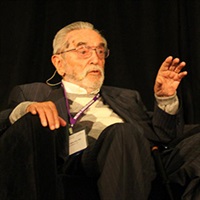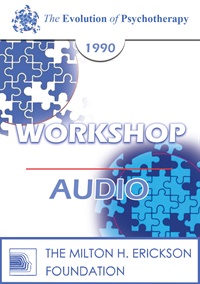EP90 Workshop 31 - Family Therapy - Salvador Minuchin, MD
- Average Rating:
- Not yet rated
- Topic Areas:
- Workshops | Family Therapy | Psychotherapy | Children and Adolescent Therapy | Therapist Development
- Categories:
- Evolution of Psychotherapy | Evolution of Psychotherapy 1990 | Pioneers in Couples and Family Therapy
- Faculty:
- Salvador Minuchin, MD
- Duration:
- 1 Hour 36 Minutes
- Format:
- Audio Only
- Original Program Date:
- Dec 16, 1990
- License:
- Never Expires.
Description
Description: This workshop explores evolving techniques in family therapy, illustrated through case material. Topics include symbolic symptoms, boundary setting, and multigenerational involvement. A featured case of a young girl with hysterical paralysis underscores how humor, flexibility, and whole-family engagement can foster change—even when full symptom resolution remains elusive.
Syllabus Description: This workshop will discuss the technique and theory of Family Therapy. Videotaped examples will be presented and discussed.
Educational Objectives:
- To describe a framework for Family Therapy
- To list three aspects of the therapeutic process
*Sessions may be edited for content and to preserve confidentiality*
Credits
Handouts
| Timestamped Transcript (1 MB) | 27 Pages | Available after Purchase |
Faculty

Salvador Minuchin, MD Related Seminars and Products
Salvador Minuchin, MD, developed Structural Family Therapy, which addresses problems within a family by charting the relationships between family members, or between subsets of family. He was Director of the Philadelphia Child Guidance Clinic. Although it was minimally staffed when he began, under his tutelage the Clinic grew to become one of the most modeled and respected child guidance facilities in the world. In 1981, Minuchin began his own family therapy center in New York. After his retirement in 1996, the center was renamed the Minuchin Center. Dr. Minuchin is the author of many notable books, including many classics. His latest is Mastering Family Therapy: Journeys of Growth and Transformation. In 2007, a survey of 2,600 practitioners named Minuchin as one of the ten most influential therapists of the past quarter-century.


